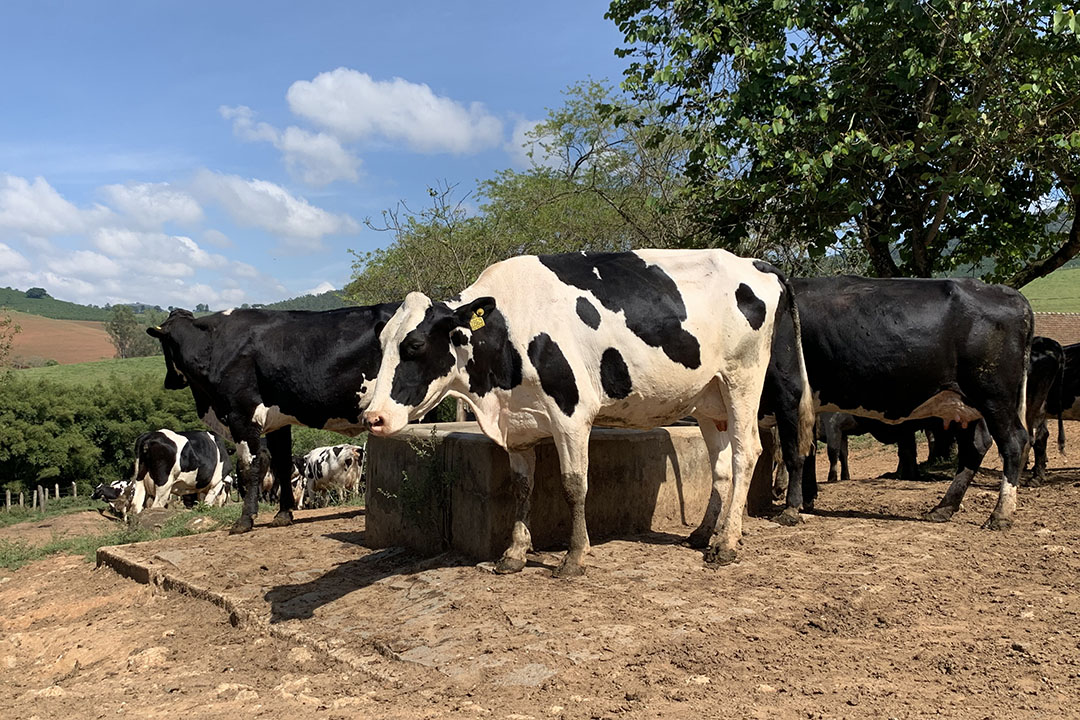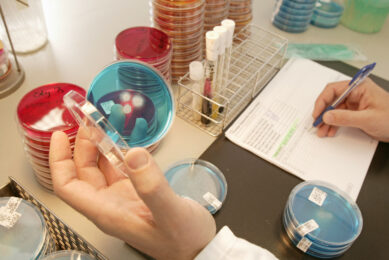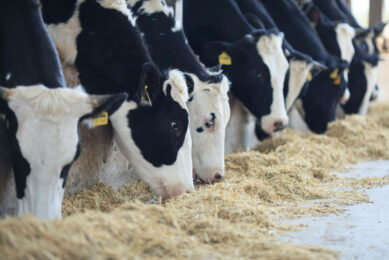Latin America: Exploring antibiotic usage across the region

National regulations across Latin America have advanced over recent years but there is no consensus about banning growth promoters in the region. What are the current regulations across Latin America and what impact is this having on the market? Here, an overview of some of the most significant countries in the region.
As a global animal protein supplier, Latin America is involved in the worldwide discussion regarding antibiotic usage and bacterial resistance.
5 trends summarise this topic across the continent, namely:
- traceability,
- more control,
- decreasing or eliminating growth promoters,
- biosecurity and
- a viable legislation for the sector.
Misset gained access to a presentation that was made regarding the issue of antibiotics during the XIX Biannual Congress Amena (Mexican Association for Animal Nutrition), last October, in Mexico, which had welcomed representatives from several Latin American countries. Bruno Caputi, coordinator for regulatory and quality affairs of Sindirações, from Brazil, signed the content that presents the regulatory advances of 12 Latin American countries, including some globally relevant producers such as Brazil, Argentina, Chile and Mexico.
Among the legislations, there are different levels of requirements and, above all, differences regarding the pace in which the rules are updated. In any case, according to Caputi, European laws clearly influence the tendencies of consumers, producers and authorities across the whole continent. “All these movements occur at the same time as the European Union promotes regulations about antibiotic usage in veterinary medicine, requiring exporter countries to have a ‘mirror’ legislation. In other words, if a certain substance is prohibited there, its suppliers must also do so till 2022,” Caputi explains.
Safe feed and food
To this end, Feed Latina (Latin America of animal feed industries association) and national associations have created the ‘Safe Feed and Food’ project which aims for regulatory alignment amongst all parties and animal feed safety in Latin America and the Caribbean. To put it into context, Brazil, Uruguay, Bolivia, Colombia, Cuba, Mexico, Chile, Argentina, Peru, Costa Rica, Ecuador and Paraguay produced in total 165 million tonnes of animal feed in 2018. Brazil (69.1), Argentina (22.3) and Mexico (38.8) alone equate to 130.2 million tonnes or 80% of this total.
In the opinion of Caputi, however, all these nations have common challenges and should work together in order to achieve mutual benefits. He suggests some solutions such as e-learning courses, reinforcing the Latin American network on contaminant control and risk analysis and promoting technical-scientific cooperation between countries. Those measures could help to improve discussions on the topic of antimicrobial resistance that, currently, is far from unanimous across the continent. On the next pages, the main focus of each country is highlighted.
Argentina
In Argentina, Senasa, the National Service of Sanitary and Agrifood Quality, regulates  antibiotic use in the country. According to Federico Luna, director of veterinary products of this institution, Argentinian animal production is likely to follow restrictive laws. He said, before the event in Mexico, that “gradually, but without a doubt we are moving towards a total ban on growth promoters”.
antibiotic use in the country. According to Federico Luna, director of veterinary products of this institution, Argentinian animal production is likely to follow restrictive laws. He said, before the event in Mexico, that “gradually, but without a doubt we are moving towards a total ban on growth promoters”.
In 2018, the country produced 22.3 million tonnes of feed for animals. In fact, Senasa cancelled a few registrations and certifications for the usage and commercialisation of feed with antibiotics, with some exceptions, such as the case of monensin. Moreover, feed containing active antiparasitic elements will remain registered until 2022 and the prohibition of enrofloxacin and some cephalosporins for use as growth promoters will advance.
In 2015, the resolution 591 created the National Antimicrobial Resistance Surveillance Program for animals intended for human consumption in order to prevent bacterial resistance. Lastly, the resolution 594 determined that new feed and supplements with medications will not be registered anymore (as of 2019), but those already approved can be used under prescription.
Bolivia
 Bolivia produced 1.8 million tonnes of feed in 2018. The Andean country describes its procedures in the General Regulations of Animal Health that allows just specialised shops to sell ‘medicated’ feed. According to the legislation, those places must be registered at the national sanitary authority, Senasag, and they need to have the specific infrastructure in place. Moreover, they must present annual reports about their sales under veterinarian supervision.
Bolivia produced 1.8 million tonnes of feed in 2018. The Andean country describes its procedures in the General Regulations of Animal Health that allows just specialised shops to sell ‘medicated’ feed. According to the legislation, those places must be registered at the national sanitary authority, Senasag, and they need to have the specific infrastructure in place. Moreover, they must present annual reports about their sales under veterinarian supervision.
Brazil
Brazil is the largest animal feed market in Latin America, producing 69.1 million tonnes in 2018. The national authority in this regard is the Ministry of Agriculture, Livestock and Supply. In 2006, animal feed with medicines were firstly described by the Normative  Instruction 65 (IN 65) that approved technical procedures for production and usage of food, supplements, premixes or concentrates.
Instruction 65 (IN 65) that approved technical procedures for production and usage of food, supplements, premixes or concentrates.
This rule requires that companies (laboratories or even farms) and products must be registered in the Ministry. Additionally, they can’t contain performance enhancers with the same principles for human medicine and can only be used under prescription from a responsible veterinarian. Furthermore, IN 65 also requires procedures in order to prevent cross-contamination, such as good practices for cleaning, prevention plans and another technical controls. Godofredo Miltenburg, president of CBNA, the Brazilian Animal Nutrition College, defends responsible antibiotic usage, based on scientific and technical evidences.
“We have seen an exaggeration of requirements. However, Brazilian professionals are already prepared to use non-antibiotic additives that improve intestinal health, provide better immunity and animal welfare. We are aware about the consumers new requirements”, Miltenburg said.
Brazil has improved the regulations for antimicrobials by the Normative Instructions 15 and 54 and the prohibition for 25 molecules between 1998 and 2019. Clorexidin, colistin, tilosin, lincomicin and tiamulin are amongst those being prohibited.
Chile
 Chile produces 7 million tonnes of feed and is the unique country in Latin America that has prohibited the manufacture, import, export, distribution, sale and possession of growth promoters since 2018. However, antibiotics are allowed for therapeutic usage under veterinarian prescription. Establishments that manufacture medicated feed and molecules must be registered. The resolution 1860/2018 also requires control for cross-contamination, tests to check homogeneity of mixtures and annual reports about production of those products. In relation to additives, there have been no changes in legislation recently.
Chile produces 7 million tonnes of feed and is the unique country in Latin America that has prohibited the manufacture, import, export, distribution, sale and possession of growth promoters since 2018. However, antibiotics are allowed for therapeutic usage under veterinarian prescription. Establishments that manufacture medicated feed and molecules must be registered. The resolution 1860/2018 also requires control for cross-contamination, tests to check homogeneity of mixtures and annual reports about production of those products. In relation to additives, there have been no changes in legislation recently.
Costa Rica
 Costa Rica’s authority is Senasa, Animal Health National Service, which determines that medicated feed needs to be registered, labelled and usage is only allowed under technical supervision. The country produced around 1.5 million tonnes of feed last year. Growth promoters are approved, but colistin is prohibited. Senasa has a strategic plan with five pillars between 2017 and 2022 in order to align its sector to the global standards against bacterial resistance. Among them, the institution aims to improve farmers practices, enhancing knowledge through surveillance, preventing infections all over herds, responsible antibiotics usage and presenting economic arguments to stimulate alternative practices.
Costa Rica’s authority is Senasa, Animal Health National Service, which determines that medicated feed needs to be registered, labelled and usage is only allowed under technical supervision. The country produced around 1.5 million tonnes of feed last year. Growth promoters are approved, but colistin is prohibited. Senasa has a strategic plan with five pillars between 2017 and 2022 in order to align its sector to the global standards against bacterial resistance. Among them, the institution aims to improve farmers practices, enhancing knowledge through surveillance, preventing infections all over herds, responsible antibiotics usage and presenting economic arguments to stimulate alternative practices.
Ecuador
 Agrocalidad is the governmental institution that manages antibiotic usage in Ecuador, which produced 3.4 million tonnes of feed in 2018. The resolution 190/2014 allows the animal feed industry to manufacture medicated food upon request, with veterinary prescription. There is no exclusive regulation for medicated feed and they simply need to go through inspections and traceability verification (via PNCR). Growth promoters and other antibiotics are allowed, as well as all additives containing pharmacological actives, but colistin has been banned.
Agrocalidad is the governmental institution that manages antibiotic usage in Ecuador, which produced 3.4 million tonnes of feed in 2018. The resolution 190/2014 allows the animal feed industry to manufacture medicated food upon request, with veterinary prescription. There is no exclusive regulation for medicated feed and they simply need to go through inspections and traceability verification (via PNCR). Growth promoters and other antibiotics are allowed, as well as all additives containing pharmacological actives, but colistin has been banned.
Mexico
Senasica, National Service for Agriculture and Food Health, legislates over the big market of 38.8 million tonnes of feed annually. Medicated feed and antibiotics are authorised, according to registered ingredients, under prescription. There is a list of active ingredients  and promoters such as ractopamine and zilpaterol and others, which are classified into 3 groups:
and promoters such as ractopamine and zilpaterol and others, which are classified into 3 groups:
- quantified recipe
- simple recipe
- deregulated
Products 1 are those with the highest animal health risk and those with the greatest control by the Mexican government, however, most antimicrobials are sold by simple prescription. The industry position is in line with respecting the responsible use of antibiotics, therefore not as a growth promoter, but for therapeutic usage respecting withdrawal times. Moreover, two antibiotics cannot be used at the same time without a series of expensive analysis.
Paraguay
Paraguay produced 1.2 million tonnes of feed in 2018 and has approved the National system for surveillance on bacterial resistance this year. The main objective is to generate  truthful information about antibiotics along the food chain. In 2012, resolution 1863 established that active substances for animal feed must be registered as a veterinary product under control for sale, production and importation.
truthful information about antibiotics along the food chain. In 2012, resolution 1863 established that active substances for animal feed must be registered as a veterinary product under control for sale, production and importation.
For example, monensin is authorised as an additive for chickens and pigs, but not for cattle where veterinary prescriptions are still being adopted. Regarding growth promoters, they are registered as pharmaceutical products and there is a primary list allowed under prescription for ruminants and pigs.
Nonetheless, the national authority predicts that they should move to zero tolerance in the medium and long term. For cattle, promoters are already prohibited. The veterinary prescription will be applied but they still do not know how to control this, because there is no veterinary guild. In 2019, Resolution 1,150 has prohibited manufacture, distribution, import and usage of any veterinary product that has colistin as its active principle and its salts.
Peru
According to the decision 483 of the Andean Community, the registration and free trade of  medicated feed is allowed. Peru produced almost 5 million tonnes of animal feed last year but it is not reviewed during registration of molecules. However, the factories must present good practices and HACCP.
medicated feed is allowed. Peru produced almost 5 million tonnes of animal feed last year but it is not reviewed during registration of molecules. However, the factories must present good practices and HACCP.
The mixture is authorised according to risk criteria, under controlled prescription and growth promoters are allowed. Restrictive regulations are still ‘in the pipeline’. Nonetheless, Peru banned several products in 2013, namely, chloramphenicol, nitrofurans (furazolidone and nitrofurazone), olaquindox and nitroimidazoles (dimetridazole, metronidazole and ronidazole).
Uruguay
Uruguay produced 1.4 million tonnes of feed in 2018. According to the Decreta of veterinary products 160 from 1997, medicated feeds are not registered because they are  therapeutic for short use under veterinarian prescription. The self-consumption and production is coordinated by livestock services to verify feed additives and there is a check list for self-processors of balanced food.
therapeutic for short use under veterinarian prescription. The self-consumption and production is coordinated by livestock services to verify feed additives and there is a check list for self-processors of balanced food.
Regarding antibiotics, growth promoters are allowed but the usage in cattle, sheep and goats is prohibited. Its extension to other species is being analysed and they can currently only be used therapeutically. However, alternative products are being used quite a lot. Monensin is used in cattle, it is classified as a therapeutic anticoccidian. Furthermore, a reviewing process is advancing regarding everything related to growth promoters. The use of colistin was prohibited, for example.







